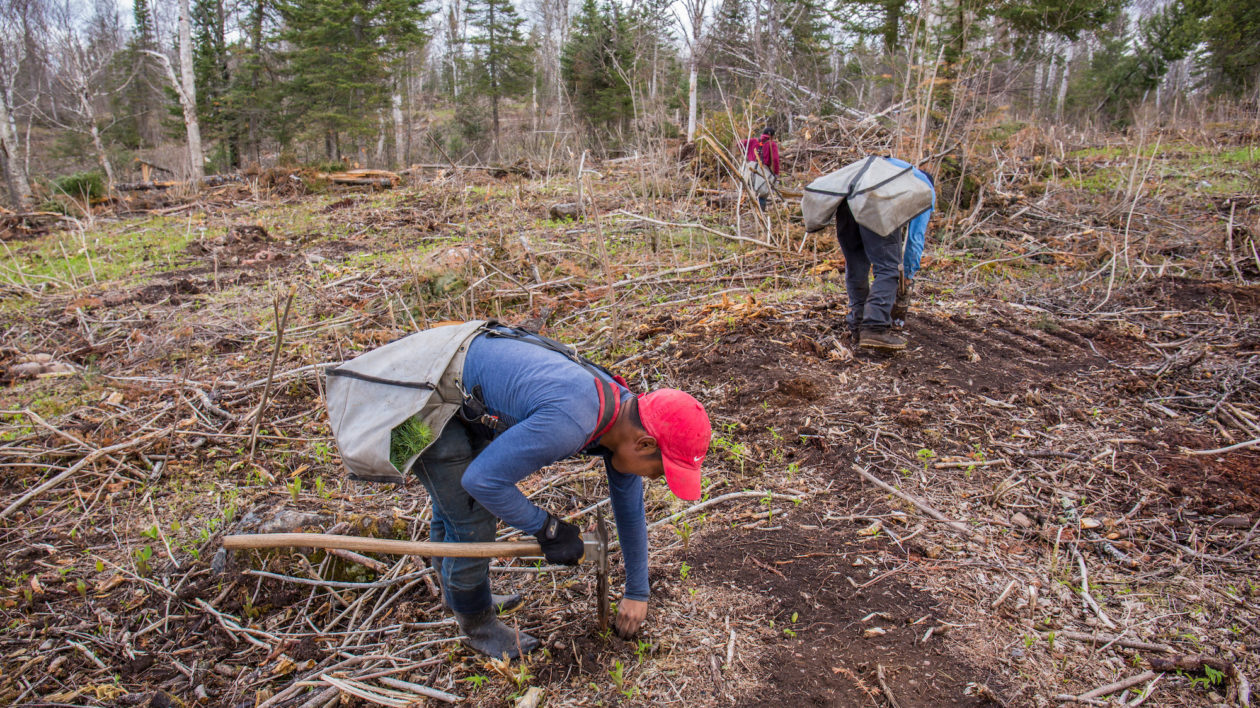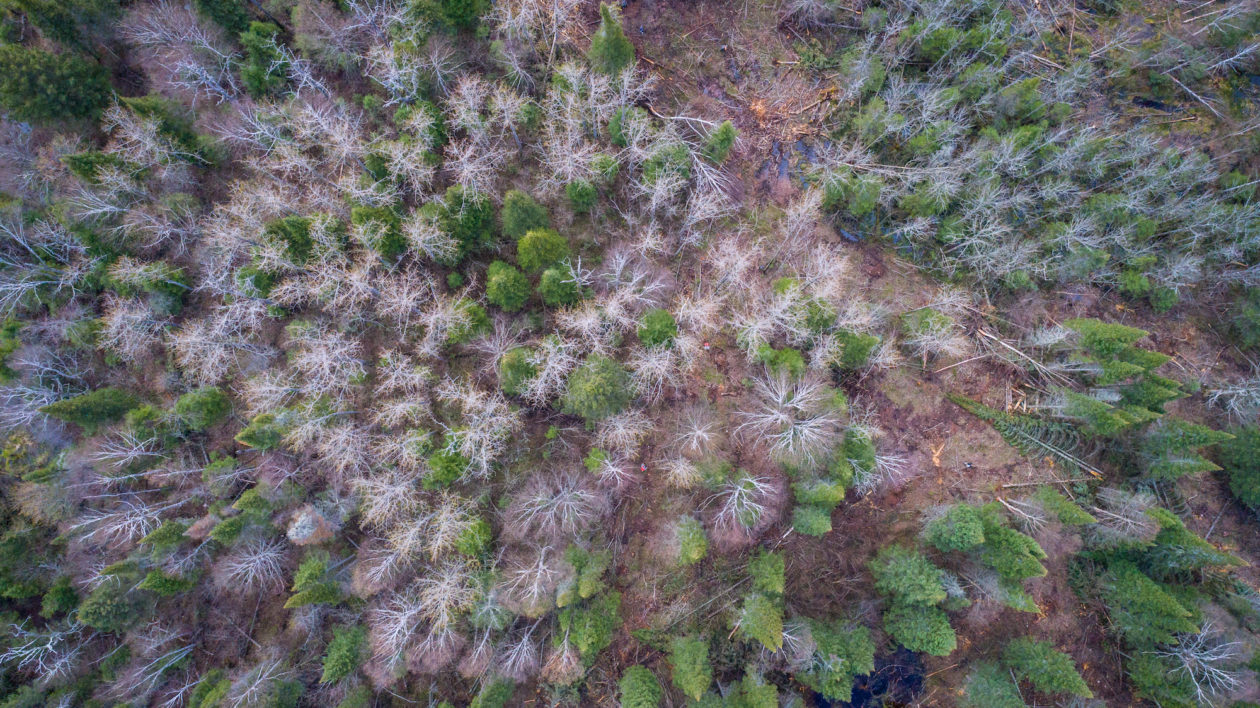Change is afoot in the Northwoods. But should we give up on the very trees that define it? Not yet. Not by a long shot.
To plant the right tree in the right place has long been a precept in forestry. But as climate change descends upon the Northwoods, a transformation is underway. Scientists project that signature species, such as paper birch and white spruce, will gradually give way to southern trees, such as red maple. So what do “right tree” and “right place” mean in 2019?
As warming continues, it is tempting to focus exclusively on “climate-proofing” our Northwoods. A mass planting of trees that can take the heat, such as red oak and bur oak, will doubtless be needed to help northern forests keep up with the pace and scale of climate change.
But what of our majestic conifers—like red pine, white pine, tamarack and white spruce—that once dominated the landscape in the Great Lakes region? Many northern conifers will be unable to survive over the long term as the climate warms.
In Minnesota, the forestry standby has never been truer than it is today—but with a twist: sustaining northern conifers may be more a matter of picking the right place for the right tree. By focusing conifer restoration on sites with moist soils and air temperatures that are cooler on average than the surrounding region, we may be able to maintain their legacy.
We now have the tools available to help us do just that. Here’s how:
Plan. Zero in on potential strongholds by going to resilientlands.org. This tool identifies places that are complex and connected, with the best shot at sustaining biodiversity into the future, regardless of what the climate is doing. Zoom in on these regions.
Prepare. Find the right spots. Knowing generally where the “resilient lands” are is a start, but you’ll need to explore further to find the best sites for planting. Look for places with north- or east-facing slopes. Find spots where the soils are mesic to moist, perhaps areas along streams or near lakes. Look for channels where cooler air may flow, or pockets where it may settle. These are the strongholds that may temper the harsher effects of global change, and where conifers may persist over the longer term.

Plant. Variety is key. Work with local ecologists and foresters to determine the best list for any location. Here’s a sample planting list for northern Minnesota: white pine, red pine, white spruce, tamarack, jack pine, northern white cedar, and black spruce.
Protect. In the Northwoods, many of our trees are vulnerable to browsing and disease. Follow best practices for protecting tree seedlings throughout their early years. For example, bud capping or caging will be necessary to help young trees survive browsing by hungry and overabundant white-tailed deer.
Northern conifers are unlikely to persist everywhere. But by concentrating our restoration work on these gentle spots, we can create conifer strongholds that may endure over time.

This project was made possible through a generous grant by the Wildlife Conservation Society originating from the Doris Duke Charitable Foundation, The Nature Conservancy’s RJ KOSE program, and the Cox Family Fund for Science and Research of the Minnesota-North Dakota-South Dakota Chapter of The Nature Conservancy.




check out the following article https://allatra.tv/en/article/the-global-cataclysm-is-coming
it is an alternative view on what we should focus on considering rapid global climate changes
To find out what tree seedling to plant where, you can also use the seedlotselection tool.org built in a collaborative effort with Conservation Biology Institute, the US Forest Service and Oregon State University. Worth a try.
Great tip, Dominique! Thank you 🙂
I would love to plant trees in my Southern California Desert communities.
I am close to Palm Springs, CA in the Coachella Valley. What do I plant in the Desert area?
Mesquite would work if your groundwater is not already 100s of meters below :-). Creosote would live there too. If you live in the desert, you should plant a xeriscape.
Another of my favorite sources for developing climate-informed planting “palettes” is the USFS Climate Tree Atlas https://www.fs.fed.us/nrs/atlas/
It’s very user friendly and has great maps and documentation. Good luck and happy planting!